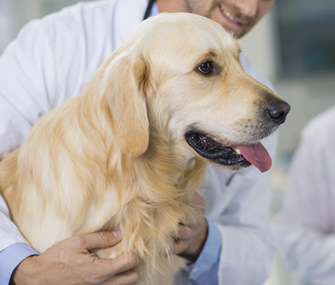Say What? 11 Wacky-Sounding Veterinary Terms and What They Mean
by Roxanne Hawn
Published on September 11, 2014
Skip To

ADR is an acronym for “ain’t doing right.” It’s the opposite of BAR, which means “bright, alert and responsive.” Veterinarians use ADR to indicate a pet isn’t doing well or is not as well as expected.
BDLD means “big dog/little dog.” Emergency and critical care veterinarians use the term as shorthand for a type of dog bite or attack (as in, big dog versus little dog). It reflects the nature and severity of injuries sustained by the smaller dog.
Borborygmi is a silly-sounding word for the normal gurgling digestive sounds veterinarians can hear when they listen to your pet’s tummy.
Eupneic may sound like something terrible, but it simply means an animal is able to breathe normally.
Flocculonodular lobe is part of the brain near the back of the cerebellum. It plays a role in balance and equilibrium.
Mittendorf’s dot is a spot on the eye’s lens caused by a congenital anomaly.
Pervious urachus sounds like an ancient emperor’s name, but it means a tubular urinary structure that remains open rather than closing at birth.
Pickwickian syndrome occurs when obesity leads to poor breathing. Veterinarians occasionally see this condition in overweight dogs.
Ptyalism is just a fancy word for drooling.
Queckenstedt’s maneuver makes collecting cerebrospinal fluid easier and faster during a spinal tap. It simply means the veterinarian or veterinary assistant briefly applies pressure to a pet’s jugular veins to increase spinal fluid pressure.
Uberschwinger artefact is a rebound effect in a digital X-ray that looks like “something” but really isn’t.
More on Vetstreet.com:
- 10 Questions Veterinarians Really Want You to Ask
- 3 Bad Things Pet Owners Do That Drive This Vet Crazy
- Ever Wonder What Your Vet Is Thinking? Dr. Marty Becker Translates





